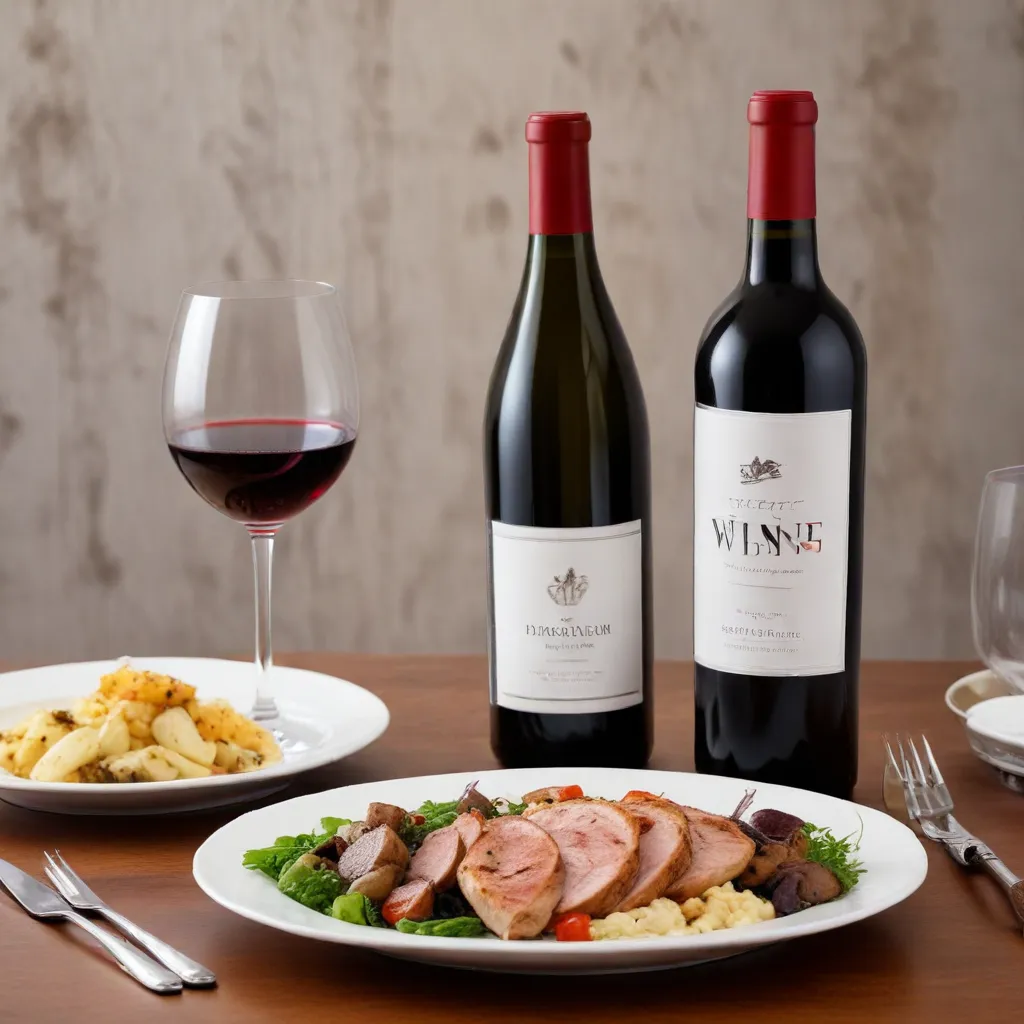
As a hospitality and wine expert writing for the Wine Garden Inn, I’m delighted to share insights on pairing culinary delights with the perfect wine. Whether you’re planning a gourmet breakfast, an elegant dinner, or a casual gathering, the right wine can elevate your dining experience and unleash a harmonious symphony of flavors.
Wine Selection
The art of pairing wine with food lies in understanding the varietal characteristics of different wines and how they interact with the flavors and textures of your meal. From light and crisp whites to full-bodied reds, each wine style offers unique qualities that can complement or contrast with your dish.
Varietal Characteristics
Cabernet Sauvignon, for instance, is known for its bold tannins and robust, fruit-forward profile, making it an ideal match for hearty, protein-rich meals like grilled steak or lamb. Conversely, a delicate Pinot Noir with its silky mouthfeel and subtle earthy notes can beautifully accentuate the delicate flavors of sautéed mushrooms or a herb-crusted salmon fillet.
Food Pairing Principles
When selecting the perfect wine, it’s crucial to consider the food pairing principles – complementary flavors, contrasting textures, and balanced acidity. A complementary pairing sees the wine’s characteristics mirroring the dish, while a contrasting pairing leverages the wine’s structure to cut through rich or heavy foods. Maintaining a balance of acidity is also key, as it can refresh the palate and prevent the meal from feeling overwhelming.
Wine Styles
Beyond individual varietals, it’s essential to consider the overall wine style – from light and crisp to full-bodied and robust. As a general rule, lighter dishes pair best with lighter-bodied wines, while heartier fare calls for more substantial, structured vintages. This principle helps ensure that neither the wine nor the food overpowers the other, resulting in a harmonious dining experience.
Meal Considerations
When planning your wine pairing, it’s vital to consider the cuisine type, the dominant flavors in each dish, and any dietary restrictions your guests may have. This holistic approach ensures that your wine selection not only complements the food but also caters to the unique preferences and needs of your diners.
Cuisine Type
For instance, when pairing with Italian cuisine, you might consider a bright, food-friendly Sangiovese or a crisp Pinot Grigio to balance the acidity of tomato-based sauces. Conversely, a hearty Malbec or Cabernet Franc would be a excellent match for the rich flavors of French cuisine.
Dish Flavors
Assessing the dominant flavors in each dish is also crucial. A spicy Thai curry might call for a slightly off-dry Riesling or a refreshing Gewürztraminer to tame the heat, while a roasted pork belly would pair beautifully with a Syrah or Tempranillo that can stand up to the dish’s fattiness.
Dietary Restrictions
When catering to guests with dietary restrictions, it’s important to consider the impact on your wine selection. For example, a vegan diner might appreciate a biodynamic Pinot Noir or an organic Chardonnay that avoids the use of animal-derived fining agents. Similarly, a gluten-free guest would be delighted by a naturally gluten-free varietal like Sauvignon Blanc or Malbec.
Pairing Strategies
With a solid understanding of wine characteristics and meal components, you can begin to strategize your pairings to create a harmonious dining experience. Whether you opt for complementary flavors, contrasting textures, or a balance of acidity, the goal is to elevate both the wine and the food, ensuring that the whole is greater than the sum of its parts.
Complementary Flavors
A Chardonnay with its rich, buttery notes can beautifully complement the creaminess of a mushroom risotto, while a Syrah with its black fruit and peppery undertones can amplify the savory complexity of a grilled lamb chop.
Contrasting Textures
Pairing a light and crisp Pinot Grigio with a creamy seafood linguine can create a delightful contrast, with the wine’s acidity cutting through the dish’s richness and cleansing the palate for the next bite.
Balancing Acidity
A tart Sauvignon Blanc can provide the perfect counterpoint to the umami-rich flavors of a grilled salmon, its bright acidity balancing the dish and preparing the taste buds for the next delectable morsel.
Serving Recommendations
Optimal wine service can further elevate your dining experience, ensuring that each sip is as enjoyable as the last. From temperature control to decanting techniques, paying attention to the finer details can make all the difference.
Temperature
Serving wines at the appropriate temperature is crucial, as it can dramatically impact the perception of a wine’s structure and flavors. As a general rule, lighter whites should be chilled to 45-55°F, while fuller-bodied reds are best enjoyed at 55-65°F.
Glassware
The shape and size of the wine glass can also influence the way a wine presents itself. Selecting the right glassware – be it a Bordeaux glass for a robust red or a Burgundy glass for a delicate Pinot Noir – can heighten the wine’s aromas and create a more immersive tasting experience.
Decanting
For older or more structured wines, decanting can be a game-changer. This process of slowly pouring the wine into a separate vessel allows the wine to “breathe,” softening tannins and revealing the full depth of flavors and aromas.
By considering the varietal characteristics, food pairing principles, and serving recommendations, you can confidently pair your culinary creations with the perfect wine, elevating your dining experience and delighting your guests. For an unparalleled pairing adventure, explore the Wine Garden Inn’s selection of estate-grown produce, seasonal garden-inspired dishes, and our carefully curated wine list at www.winegardeninn.com.
